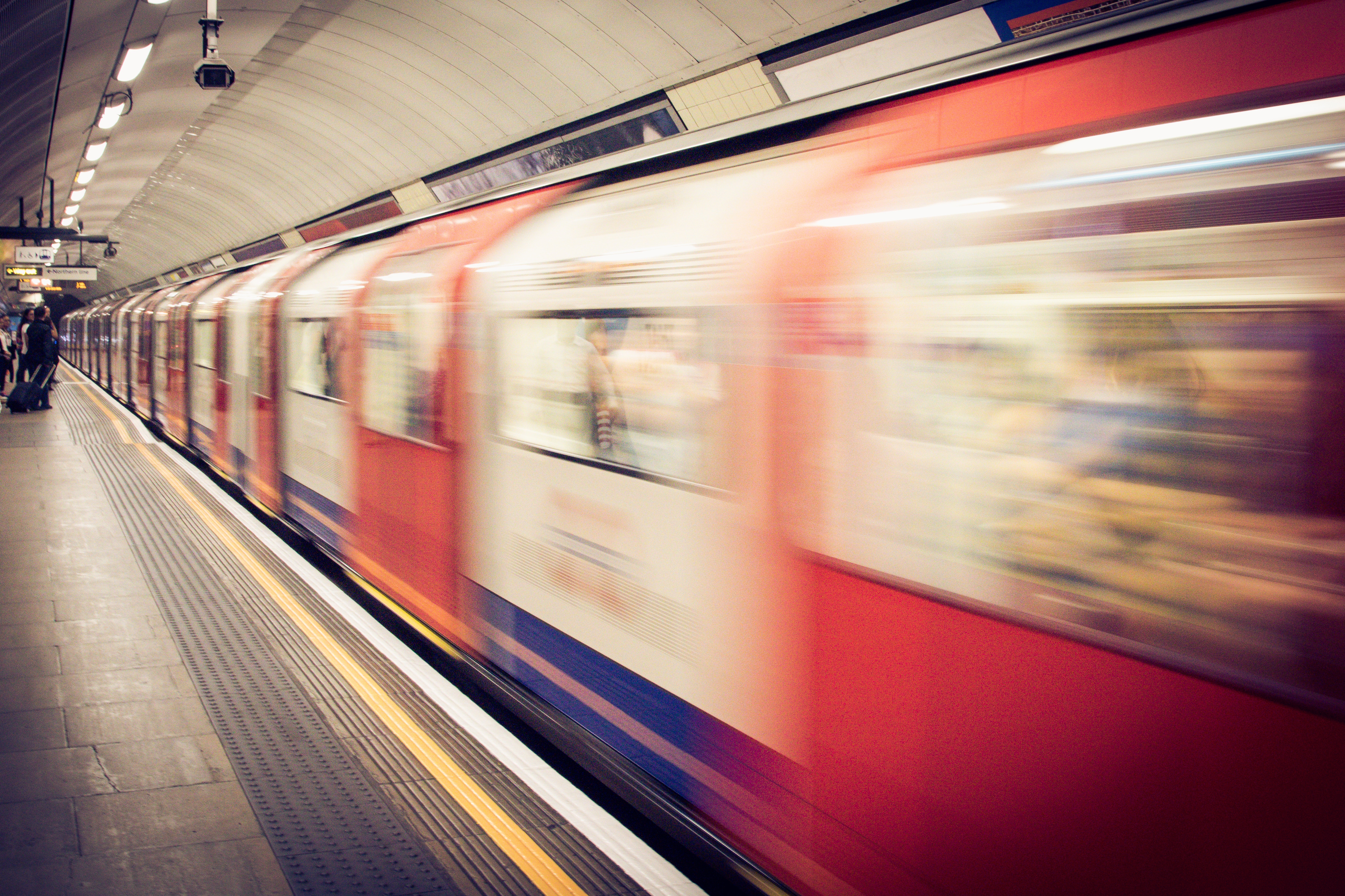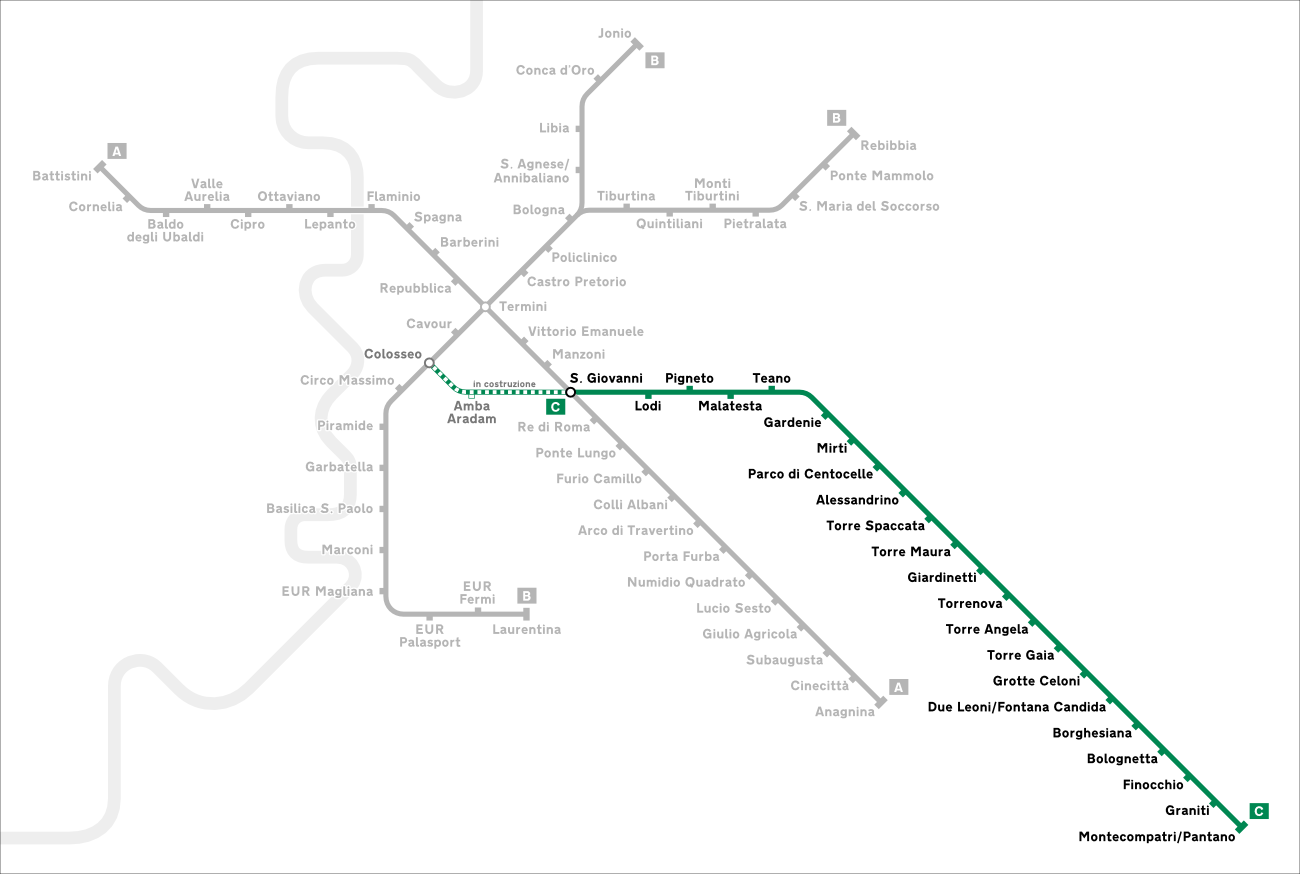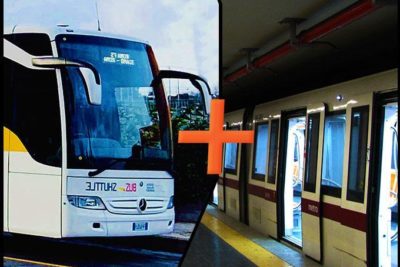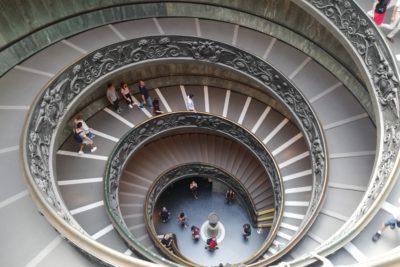
LINE C
The C line of the Rome underground , under construction since 2007 and not completed, cut off the city from the northwest, in Della Vittoria district, in the eastern suburbs extending beyond the ring road with a total length of about 25.6 km and 30 stations passing through the historic center of the capital.
The C line of the Rome metro is characterized by the color green and the peculiarity of the line is the absence of the driver on the trains thanks to the use of Driverless technology to which we have dedicated a deepening.
Currently, about 21.5 km of the track with 24 stations is under construction.
In the eastern part it will use in part the surviving route of the old Rome-Fiuggi railway and the interchanges planned with the other lines will be at San Giovanni and Ottaviano (line A) and Colosseum (line B).
MAP - LINE C

Rome metro card (includes also metro, bus, tram and Airport Bus from Ciampino)
VATICAN MUSEUMS & SISTINE CHAPEL – Skip the line tickets
Currently, about 21.5 km of the track with 24 stations is under construction.
In the eastern part it will use in part the surviving route of the old Rome-Fiuggi railway and the interchanges planned with the other lines will be at San Giovanni and Ottaviano (line A) and Colosseo (line B).
THE STATIONS OF LINE A:
- Monte Compatri-Pantano
- Graniti
- Finocchio
- Bolognetta
- Borghesiana
- Due Leoni – Fontana Candida
- Grotte Celoni
- Torre Gaia
- Torre Angela
- Torrenova
- Giardinetti
- Torre Maura
- Torre Spaccata
- Alessandrino
- Parco di Centocelle
- Mirti
- Gardenie
- Teano
- Malatesta
- Pigneto
- Lodi
- San Giovanni
- Amba Aradam – Ipponio – non operativa
- Fori Imperiali – Colosseo – non operativa
- Venezia – non operativa
- Chiesa Nuova – non operativa
- San Pietro – non operativa
- Risorgimento – non operativa
- Ottaviano – non operativa
- Clodio/Mazzini – non operativa
THE CONSTRUCTION OF LINE A:
The construction works for the extension of the line were long and complex, mainly due to the technique of open excavation , which caused many problems to the viability of Rome. Precisely for this reason the works stopped for 5 years, before starting again with the technique, used today, of moles , which if on one hand solved the problem of traffic and traffic, on the other hand brought problems to the buildings placed above the route of the line.
Fermi for another two years, due to the crossing of the Tiber river, other problems resulted with an error in the route, due to the construction of the Nenni bridge for crossing the river, and for archaeological finds near Piazza della Repubblica.


